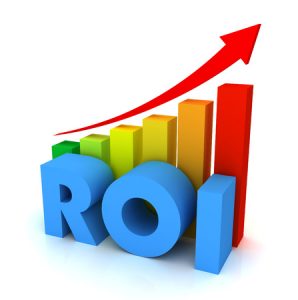
Like with most industries, marketing is filled with jargon. To stay relevant, it’s important to understand today’s industry lingo and buzzwords. The following is a collection of marketing terms to help you brush up on your language and perhaps introduce you to a few new marketing terms.
Marketing Terms: A-B

1. A/B testing: The process of testing two variations of a specific element, while holding everything else constant, to determine which version performs best. This is often done with email marketing (variations in subject line), calls to action (variation in language or design) and landing pages (variation in content and design).
2. Analytics: The practice of measuring and analyzing marketing performance to maximize effectiveness.
3. B2B (business to business): Describes companies that sell to other companies.
4. B2C (business to consumer): Describes companies that sell directly to consumers.
5. Backlink: An incoming hyperlink from an outside web page to your website.
6. Blog: Short for weblog or web log, an owned media asset that a company or individual uses to consistently publish and distribute content that educates, entertains and engages target audiences.
7. Bottom of the funnel: The final stage of the buyer journey in which leads have identified their problem, have shopped for possible solutions and are close to making a purchase.
8. Bounce rate: The percentage of visitors who navigate away from a site after viewing only one page.
9. Branding: The practice of creating a name, symbol, or design that differentiates a company’s products and services from competitors.
10. Buyer journey: The process buyers go through to research products and/or services and educate themselves before making a final purchase decision.
11. Bylined article: An attributed article published in an external publication or outlet to help thought leaders and organizations reach, engage, and build trust with a new audience.
Marketing Terms: C-D

12. Call to action (CTA): A text link, button, or image that prompts a user to take a specific action.
13. Case study: An in-depth analysis of work a company completed for a client or customer that highlights the goals, process, and services used, as well as the results achieved through the services.
14. Click-through rate (CTR): The percentage of your audience who click on a particular link.
15. Content: Marketing assets such as bylined articles, videos, blogs, white papers, case studies, blogs, social media posts, images and websites.
16. Content marketing: A strategic approach to marketing that involves consistently creating and distributing high-quality, valuable content to attract, engage, and convert target audiences.
17. Conversion rate: The percentage of people who complete a desired action on a website, such as downloading content or submitting a contact form.
18. Customer relationship management (CRM): A system that manages a company’s interactions with current and potential customers.
19. Customer acquisition cost (CAC): Total sales and marketing cost. To calculate CAC, add the costs associated with marketing spends, salaries, commissions, bonuses and overhead. Divide the total amount by the number of new customers acquired in that time period to determine the average CAC for one customer.
20. Drip campaign: An email strategy that delivers messages to target audiences over a certain period of time.
Marketing Terms: E-L
![]()
21. Earned media: Media exposure a company earns organically, often by accomplishing something truly newsworthy and attracting media attention, distributing press releases and securing press mentions.
22. Ebook: An electronic version of a printed book that can be read on a computer or tablet.
23. Editorial calendar: The schedule a publication uses to plan content and ensure consistent publication.
24. Email marketing: The process of sending strategic messages directly to target audiences via email with the purpose of educating, engaging, and/or encouraging them to take a specific action.
25. Engagement rate: The amount of interaction (shares, likes, comments) a piece of online content receives.
26. Evergreen content: Content that continues to provide value to readers long after it is originally published.
27. Gated content: Marketing material that website visitors can only access by providing contact information and that fuels a company’s lead generation.
28. Inbound link: A link from an external site to your website.
29. Inbound marketing: Marketing activities that draw targeted audiences into a company’s website.
30. Infographic: Visual image, such as a chart or diagram, that explains information or data.
31. Key performance indicators (KPIs): Quantifiable metrics used to evaluate marketing performance against strategic goals.
32. Keyword: A specific word or phrase that a user enters into a search engine to find desired information. Also used by marketers to optimize content on websites.
33. Landing page: A website page that contains a form used for lead generation. The page features a marketing offer or gated asset and captures visitor information in exchange for that offer.
34. Lead: A potential client or customer who has expressed interest in a company.
35. Lead nurturing: The process of providing qualified sales leads with valuable, relevant content at various points of the buying cycle.
Marketing Terms: M-S

36. Marketing automation: Software platforms and technologies designed to manage digital marketing and automate tasks.
37. Marketing funnel: A model illustrating the process used to attract prospects, convert them into leads and nurture them before they finally reach a purchasing decision.
38. Middle of the funnel: The stage in the marketing funnel where prospects have identified their problem and are looking for solutions to solve it.
39. Outbound marketing: A form of marketing focused on pushing a message outto target audiences. Examples include cold calling, attending conferences and trade shows, and print or broadcast advertising.
40. Public relations (PR): A strategy that positions a company in a positive light through messages delivered by third-party sources, such as influencers or the media.
41. Return on investment (ROI): A metric that evaluates profitability by measuring the benefit a company gains for the resources it invests in a project or initiative.
42. Sales funnel: The process by which individuals or companies discover a problem or need, identify potential solutions or vendors, conduct research, and make a final purchase decision .
43. Search engine optimization (SEO): The practice of influencing a website’s visibility in a search engine’s organic, unpaid search results through backlinks, keywords, content and other techniques.
Marketing Terms: T-W

44. Thought leader: An industry expert who shares his or her expertise with a broader, targeted audience with the purpose of educating, engaging, providing value and building trust with key audiences.
45. Top of the funnel: The beginning of the marketing funnel, where prospects are starting to identify a problem, look for more information and learn about potential solutions.
46. Unique visitors: A person who visits a website in a given time.
47. User experience (UX): The overall experience a customer has with a particular business, front their initial discovery through interaction, purchase, use and advocacy of the brand.
48. Webinar: An online seminar that provides value and education to target audiences and fuels lead generation and brand awareness.
49. Website traffic: A measurement of the number of visits a website receives.
50. White paper: Content that educates audiences by providing exclusive and in-depth information, analysis and research about a particular topic.
New and Old Marketing Terms
Of course, these are just 50 of the many terms marketers use every day. Did we miss any of your favorite (or least favorite) buzzwords?

